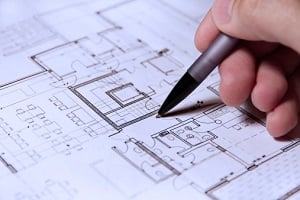 The physical layout of any office space is never random. Every cubicle, coffee machine, bathroom and executive office is, ideally, placed with purpose. Creating an efficient environment for your employees to work in is important. You don’t want distractions too close, but features like water fountains, snack bars, vending machines and bathrooms should be reasonably accessible.
The physical layout of any office space is never random. Every cubicle, coffee machine, bathroom and executive office is, ideally, placed with purpose. Creating an efficient environment for your employees to work in is important. You don’t want distractions too close, but features like water fountains, snack bars, vending machines and bathrooms should be reasonably accessible.
When it comes to equipment that facilitates productivity, such as office copy machines and multifunction printers, placement is equally important. You might learn some interesting facts about productivity in the workplace by simply mapping out your print devices’ location. Here are just a few facts to consider:
Personal Printers
Personal printers have historically been a staple at many workstations throughout organizations. If you were to map out your office copy machines when this was the case, the number of printers (and the costs to run them) would have been very high.
Today, standard multifunction printers can eliminate the need for most personal printers because they provide a secure printing function. For example, ID cards allow your employees to send a secure job to a shared printer without compromising information. The job doesn’t print until the individual arrives at the office copy machine and swipes an ID card. This provides your employees that handle confidential documentation the ability to print on shared devices, without putting confidential information at risk.
But, employees who benefit from a personal printer may still exist after your inventory assessment. For example, the leasing manager at a car dealer prints volumes of paperwork for consumers to sign, making a desktop printer a smart investment (and even a sales tool). At the same time, every salesman in the dealership probably doesn’t require a desktop printer to perform his/her job successfully.
Mapping out the placement of printers and copy machines in the office can help you take an inventory of all devices spread throughout your organization. But more importantly, it can help you analyze where equipment can be eliminated to save on costs. For example, by removing a large portion of personal printers from your office you can save a significant amount of money in terms of hardware acquisition as well as ongoing supply and management costs.
Clear Support & Management Structure
In many organizations, the IT department is responsible for servicing and managing supplies for personal printers. At the same time, individual departments are responsible for their own multifunction devices because they fall within their department budget. What happens when departments with separate budgets share a space, or even share equipment? Who is responsible for support and management? As you will see when this is mapped out, equipment support and management can become complex and confusing. This alone is likely affecting the productivity of your employees, as well as spending efficiency.
Mapping out the ideal location of office print devices can help simplify the support, maintenance and management of your fleet of printers and multifunction devices. Additionally, it can help identify areas for improvement and plan for future growth.
Users Per Device
One of the biggest benefits of printer mapping is gaining a clear picture of the number of users per device in the office. Productivity levels can drop dramatically if there is an area in your office that is underserved by multifunction devices. On the other hand, cost inefficiency occurs if there are too many devices per the number of employees. The benchmark user-to-device ratio in any office is 10:1.
This map, for example, can help you identify areas in the company that have an excess of devices and redirect resources to areas on the map with few devices and heavy users.
Keep in mind though, your business printing needs should always be the primary driver for the number, type and placement of devices. Just because your marketing department has a higher device to employee ratio, doesn’t mean one should be moved to human resources. While marketing requires multi-page brochures with brilliant color photos, HR is unlikely to need a device with equal functionality.
The Big Picture
Finally, mapping your office copy machines and other printing equipment will help you gain a clear visual of the current print landscape in your company. From here you can assess where inefficiencies lie, and visualize a more optimized environment for your current printing needs. An optimized print environment allows employees to quickly print jobs they need, on devices capable of producing the results they need. In turn, this will help your company save money, streamline workflow and improve the ongoing maintenance and management of your print fleet.
A print specialist’s expertise throughout this assessment can make a significant difference in the amount of time it takes you to complete your map, and the resulting plan for improvement.

